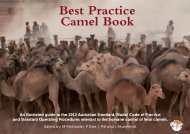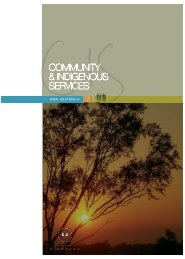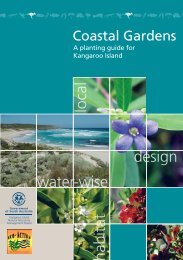Seed Certification Manual - Rural Solutions SA - SA.Gov.au
Seed Certification Manual - Rural Solutions SA - SA.Gov.au
Seed Certification Manual - Rural Solutions SA - SA.Gov.au
Create successful ePaper yourself
Turn your PDF publications into a flip-book with our unique Google optimized e-Paper software.
South Australian <strong>Seed</strong> <strong>Certification</strong> Scheme<br />
3.4.6 Forward labels from sowing seed to <strong>Seed</strong> Services<br />
Forward sowing seed labels to <strong>Seed</strong> Services within 21 days of sowing. The labels should be<br />
bundled together and identified by cultivar name, line number and date of sowing.<br />
Where the number of sowing labels per crop exceeds twenty, the applicant need only send<br />
the highest and lowest numbered labels – provided all label numbers of the seed sown are<br />
advised in writing to <strong>Seed</strong> Services.<br />
3.5 <strong>Seed</strong> crop inspections<br />
3.5.1 <strong>Seed</strong>ling inspection<br />
Submitting the Certified <strong>Seed</strong> Crop Application form ensures that all necessary crop<br />
inspections are conducted, including a seedling inspection if required.<br />
In general:<br />
° cereals, canola and pulses will not require a seedling inspection<br />
° new forage/pasture/vetch crops will require a seedling inspection<br />
° resown or regenerating annual legume crops may require a seedling inspection, depending<br />
on crop history.<br />
Refer to the individual Crop Standards for more information about the requirement for a<br />
seedling inspection.<br />
3.5.2 Pre-harvest inspection<br />
All seed crops require a pre-harvest inspection. The pre-harvest inspection for most crop types<br />
is conducted during the flowering period. For some wheat cultivars, where chaff colour is an<br />
important identification characteristic, inspections may be delayed until this period.<br />
If varietal purity cannot be accurately assessed bec<strong>au</strong>se the crop is:<br />
• severely lodged, diseased or herbicide affected,<br />
• obscured by a cover crop or weeds, or<br />
• stunted or poorly grown,<br />
the crop may be rejected from certification.<br />
Applicants receive a copy of all inspection reports conducted on their property.<br />
For proprietary cultivars, where requested, inspection reports will also be provided to the<br />
cultivar owner or licensee.<br />
The field inspector assesses the following during the pre-harvest inspection:<br />
• genetic purity<br />
- numbers of off-types<br />
- numbers of other cultivars<br />
- presence of seedheads from volunteer seedlings<br />
- number of other crop species<br />
• isolation<br />
• presence of weeds (including on check banks, channels and fence lines)<br />
• presence of disease<br />
• plant density<br />
• potential crop yield<br />
Refer to the individual Crop Standards for more information about standards for each species.<br />
Procedures and Standards for <strong>Seed</strong> <strong>Certification</strong><br />
May 2002







